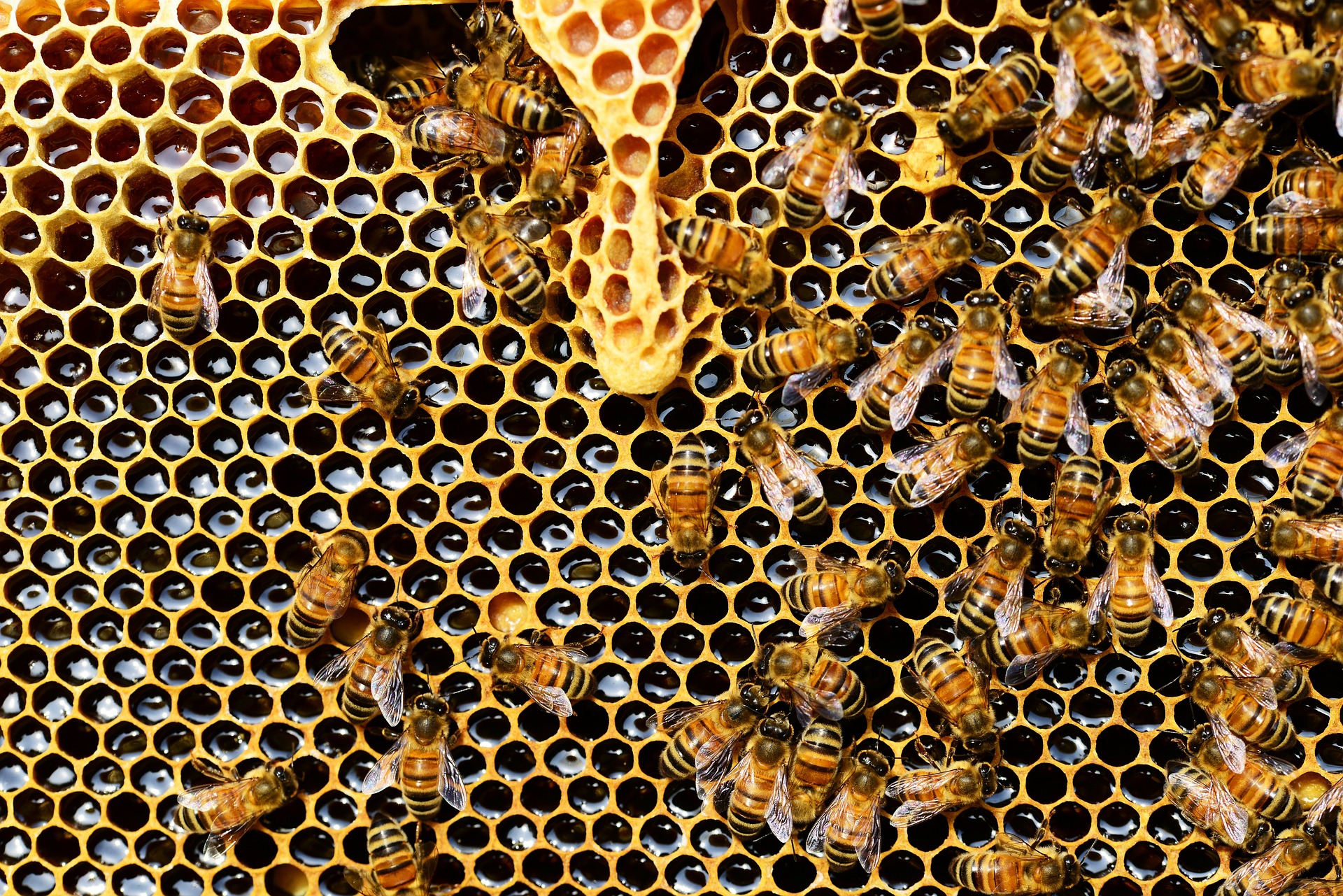Honey is most likely the world’s earliest sweetener. We’ve found ancient rock paintings depicting bee hives, and it’s mentioned in ancient Sumerian and Babylonian cuneiforms. Honey has been used as food and as medicine, and it’s essentially immortal. Why?
Honey’s secret
There are two main reasons: the acid and moisture content. Honey is very acidic. It has a pH between 3 and 4.5, and that acid prevents any gross bacteria from growing. If something tries, it dies very quickly. As for moisture, there’s very little. As a sugar, it’s hygroscopic, which means it doesn’t have much water. Bacteria are like most creatures – they need water – and without it, they die.
Why does honey have so little water? It’s a fascinating process. Before honey, there’s nectar, and that’s actually 60-80% water. When bees make honey from this substance, they flap their wings to dry it out, removing a lot of the water. They also eat the nectar and mix it with a special enzyme in their stomachs, breaking it down into honey and creating gluconic acid and hydrogen peroxide. The next step is to vomit into the combs, and the bees have successfully made very low-moisture honey, complete with hydrogen peroxide, which kills bacteria. That’s also why it’s so great at protecting wounds from infection.

Honeycomb
Storing honey
So, the reason honey lasts forever is because it’s so hostile to bacteria. However, it’s not impossible for honey to go bad. If you leave it unsealed and in a warm place, honey actually sucks moisture from the air and becomes more watery. Eager bacteria can now survive. You should store honey in a cool place and always seal it. You can even freeze it, which has the added benefit of preventing crystallization. This is when the honey becomes clumpy, and while it’s still edible, it doesn’t have the smooth, pourable texture people like. If this happens to your honey, you can warm it by putting the jar in a pot of warm water and carefully stirring, so no water gets inside. If you’re in a rush, stick it in the microwave for half a minute, stir, and then cool. If there are still crystals, repeat.
Honey and babies
While most bacteria can’t survive in honey, there is one you should be aware of: clostridium botulinum. This spore is sometimes present in honey and while adults and children aren’t affected, it can cause potentially fatal food poisoning for young babies. The spore is actually technically inactive, but it can spread in a baby’s immature digestive tract. Babies really shouldn’t be eating honey anyway, because the sugar is bad for their growing teeth, so this problem is easy to avoid. You can safely give toddlers food sweetened with honey; their bodies are strong enough to kill the spore.
Using honey
If you want the real deal, get raw honey. Processed honey often contains hidden added sweeteners and some of the nutrients have been killed off during the manufacturing process. Raw honey is also more likely to contain that dangerous spore we talked about, so you should definitely not feed it to babies.
Want to use more honey in your baked goods? You can replace sugar with honey following these rules:
- For every 1 cup of sugar, use ½-⅔ cup honey
- For every 1 cup of honey, add ¼ teaspoon of baking soda
- For every 1 cup of honey, reduce other liquids by ¼ cup
- Reduce oven temperature by 25-degrees.
—————–
Love honey’s rich, sweet flavor? You should check out these raw chocolate bars from Oregon-based Honey Mama’s, which uses raw honey as the primary sweetener.




